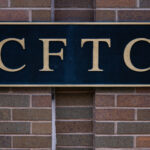According to a number of media reports, American International Group Inc. was the lead insurer for the recent Asiana Flight 214 crash, which is not too surprising, given the insurer’s presence in Asia and focus on the aviation market.
In addition to its foreign writings, AIG is a leading writer of aircraft insurance in the U.S. The insurer wrote about $372.6 million in aircraft premiums on a direct basis in 2012, giving it about a 20 percent share of the U.S. market, SNL data shows. While it ceded a fair portion of its business, AIG was still the leader in 2012 when measured by net premiums written.
 Per the NAIC instructions, the aircraft line comprises coverage for the aircraft and its contents, as well as the liability of the aircraft owner and manufacturer to passengers, airports and other third parties.
Per the NAIC instructions, the aircraft line comprises coverage for the aircraft and its contents, as well as the liability of the aircraft owner and manufacturer to passengers, airports and other third parties.
Incurred loss ratios on aircraft insurance have been relatively low for the U.S. P&C industry within the past few years. From 2007 to 2012, the highest annual loss ratio was 54.1 percent on a direct basis and 60.1 percent on a net basis.
For writers such as HCC Insurance Holdings Inc., that seems to be holding true internationally as well. The company achieved a 61.7 percent loss ratio on its aviation business in the first quarter, which was better than expected, as President and COO William Burke Jr. indicated during a May conference call. But it is a competitive market, particularly internationally, he also said, according to a transcript of his remarks.
The chief executive of XL Group Plc’s insurance operations seemed to offer similar commentary during an industry event held June 11. In response to a question on rate increases, Gregory Hendrick said that in aviation and aerospace, loss ratios are stable or improving, but rates continue to decline. There appears to be a reduction in frequency within the line, which could be due to factors such as better equipment and improved safety or merely an anomaly, he said, according to a transcript.
Regarding the Flight 214 wreck, South Korea’s Financial Supervisory Service said insurers provided $130 million in insurance coverage for the aircraft and $2.25 billion worth of liability coverage, according to a July 7 report translated by SNL. The report also named the Korean insurers, a group that included LIG Insurance Co. Ltd., Samsung Fire & Marine Insurance Co. Ltd. and Hyundai Marine & Fire Insurance Co. Ltd.
The Schedule F section of statutory insurance filings is somewhat helpful in that it reveals whether a U.S. insurer has assumed business from one of these insurers. For instance, Samsung Fire & Marine ceded $45.5 million in premiums in 2012 to Federal Insurance Co., a unit of Chubb Corp. But it is unclear exactly what type of business was being reinsured, and therefore one cannot assume it was necessarily aircraft risk. Chubb declined to comment for this report.
Some of the other top U.S. P&C companies assuming premiums from South Korean insurers in 2012 were W. R. Berkley Corp. and Berkshire Hathaway Inc., according to SNL data.
Source: SNL
Was this article valuable?
Here are more articles you may enjoy.

 Nearly 24 Firms Seek Deal With CFTC to Settle Enforcement Cases
Nearly 24 Firms Seek Deal With CFTC to Settle Enforcement Cases  Plane Carrying New York Lawmakers Clipped at Reagan Airport
Plane Carrying New York Lawmakers Clipped at Reagan Airport  More Resilient Organizations Successfully Battled Ransomware in 2024: BakerHostetler
More Resilient Organizations Successfully Battled Ransomware in 2024: BakerHostetler  Insurance Industry Contemplates Knock-On Effect of Tariffs to Claims, Consumers
Insurance Industry Contemplates Knock-On Effect of Tariffs to Claims, Consumers 